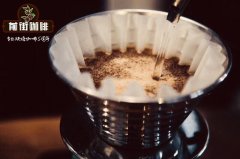Robusta coffee beans taste really bad? Where are Robusta coffee beans produced?

Professional coffee knowledge exchange more coffee bean information please follow the coffee workshop (Wechat official account cafe_style)
Front street-introduction of Robusta coffee beans
Vietnam is located in Southeast Asia and has a tropical and subtropical climate. The climate is divided into three regions: the northern subtropical humid climate, the central and southern tropical monsoon climate and the central and southern savanna. Annual rainfall ranges from 1200 mm to 3000 mm, with temperatures ranging from 5 degrees Celsius in December to January and 37 degrees Celsius in April to May. Rainfall ranges from 1200 mm to 3000 mm, and annual temperatures vary from 5 degrees Celsius (December and January) to 37 degrees Celsius (April and May). The seasonal division is more pronounced in the north of the country than in the south.
Production area
The south of Vietnam has a hot and humid tropical climate, which is suitable for growing ROBUSTA coffee and the north is suitable for growing ARABICA coffee. Robusta continues to grow in four provinces in the central highlands (Duck-Lake, Lindong, Dark-Nong and Calais), with a total area of 530000 hectares and about 70, 000 hectares in other provinces. The cultivation of Arabica has been supported, including Sura (north-west Viet Nam), Enan, Kwong San (central provinces) and Landong (central highlands), as well as other central regions suitable for Arabica varieties.
Coffee in Vietnam is grown in areas between 500 and 1200 meters above sea level.
The main Robusta variety grown in Vietnam comes from the Indonesian island of Java. There are two main varieties of Robusta grown in Vietnam. One is the original Robusta adzuki bean, which is of good quality but has limited planting area because of its low yield and weak disease resistance. The second category is the so-called high-yielding varieties.
About 99% of Arabica coffee grown in Vietnam is katimo. Over the past 20 years, Vietnamese researchers have also crossed and grafted with Robusta varieties to produce new Arabica varieties, all with names starting with THA or TN. These new varieties can adapt to the local soil and climate, with high yield and enhanced resistance to diseases and insect pests.
Knowledge: coffee belongs to Rubiaceae. So far, 103 varieties of coffee have been found, but they have commercial value. Only three categories are widely cultivated.
In short: Qianjie is a coffee research hall, happy to share the knowledge about coffee with you, we share unreservedly just to make more friends fall in love with coffee, and there will be three low-discount coffee activities every month. The reason is that Qianjie wants to make more friends drink the best coffee at the lowest price, which has been Qianjie's tenet for 6 years!
END
Important Notice :
前街咖啡 FrontStreet Coffee has moved to new addredd:
FrontStreet Coffee Address: 315,Donghua East Road,GuangZhou
Tel:020 38364473
- Prev

Why is the price of authentic Blue Mountain No. 1 coffee expensive? are blue mountain coffee beans Arabica coffee beans?
Professional coffee knowledge exchange more coffee bean information please follow the coffee workshop (Wechat official account cafe_style) front street-Arabica coffee bean variety introduction Arabica origin in Ethiopia, in South Africa, Africa, Asia and other countries also have production, accounting for 70% of the world coffee production. Arabica's resistance to diseases and insect pests is relatively weak, so the highland areas are compared.
- Next

Are Katim and Arabica related? are Yunnan Katim coffee beans good?
Professional coffee knowledge exchange more coffee bean information please follow the coffee workshop (Wechat official account cafe_style) Qianjie-Yunnan Katim varieties introduction Yunnan is the main coffee bean producing area in China. Yunnan is located in the subtropical mountain climate zone south of the Tropic of Cancer, with unique plateau red soil, fertile and loose soil and mild climate, which is especially suitable for growing small-grain coffee. Today is small.
Related
- Beginners will see the "Coffee pull flower" guide!
- What is the difference between ice blog purified milk and ordinary milk coffee?
- Why is the Philippines the largest producer of crops in Liberia?
- For coffee extraction, should the fine powder be retained?
- How does extracted espresso fill pressed powder? How much strength does it take to press the powder?
- How to make jasmine cold extract coffee? Is the jasmine + latte good?
- Will this little toy really make the coffee taste better? How does Lily Drip affect coffee extraction?
- Will the action of slapping the filter cup also affect coffee extraction?
- What's the difference between powder-to-water ratio and powder-to-liquid ratio?
- What is the Ethiopian local species? What does it have to do with Heirloom native species?

